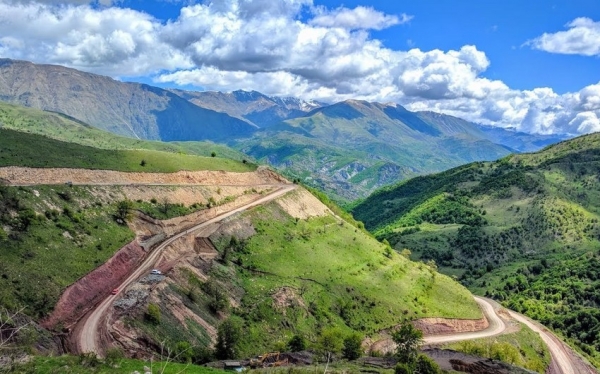As is known, in 1989-1993 Armenia occupied Nagorno-Karabakh and the surrounding territories of Lachin, Kalbajar, Gubadli, Zangilan, Jabrayil, Fizuli-Agdam (the district center and much of the territory) and Fizuli (the district center and much of the territory) administrative districts of the Republic of Azerbaijan.
Nowadays, issues concerning the restoration of economic activities, economy, water balance, agriculture, industry and tourism are at the forefront of the agenda. President Ilham Aliyev ordered to create a temporary special administration in Karabakh, as well as work out a general plan to rebuild the infrastructure of the cities and villages razed to the ground over the 30-year occupation.
Special temporary administrations assigned to the territories freed from occupation will be engaged in protecting significant facilities of transport and telecommunication infrastructure, energy and water supply systems, reservoirs, sources of increased danger to people and the environment. They will also organize protection of public order and security, carry out search, collection and inventory of weapons, ammunition and military equipment. In cooperation with the government agencies, special commandant’s offices shall arrange mine-clearing and prevent diversion and terrorism attempts. The ministries of emergency situations, energy, agriculture, transport and others were ordered to assess the status of sectors they are in charge of and prepare plans for their development in the retaken districts.
Natural resources potential
Azerbaijan regained control over a 198km long section of the state border with Iran, stretching from Horadiz settlement to the border of Zangilan district, and over a 360km long section of Azerbaijan-Armenia state border (558km in total). There had been natural monuments, rare plants and animal species widespread in the occupied region before the occupation. The occupied mountainous zone of the Lesser Caucasus is a large forest area of Azerbaijan. The total forest area of the region was 246.7 thousand hectares, it became extinct as well.
A number of nature reserves were created in order to protect the natural landscape, the world of rare plants and animals on the territories of the Minor Caucasus. Noteworthy here are the Besitchay reserve, Lachin reserve and others. Besitchay reserve was created in 1974 in the south-west of Azerbaijan, on the now-liberated territory of Zangilan, in the valley of the Besitchay River. The area of the reserve is 107 hectares. The protected object here is the eastern plane tree. The plane-tree grove stretches along the river for a distance of 12 km. The existing trees are up to 500 years old. The territories are rich in subsoil and surface natural resources. The most widespread minerals are non–ferrous metal ores, gold, mercury, chromite, perlite, lime, marble, agate, mineral waters, and others. The territory also has a wide resort and recreational potential.
The below given table provides a list of mineral deposits located in the territories of the Azerbaijan Republic districts, plundered by Armenians.








